THE “GOETHE” AT No. 461 GREENE AVE. (1890)
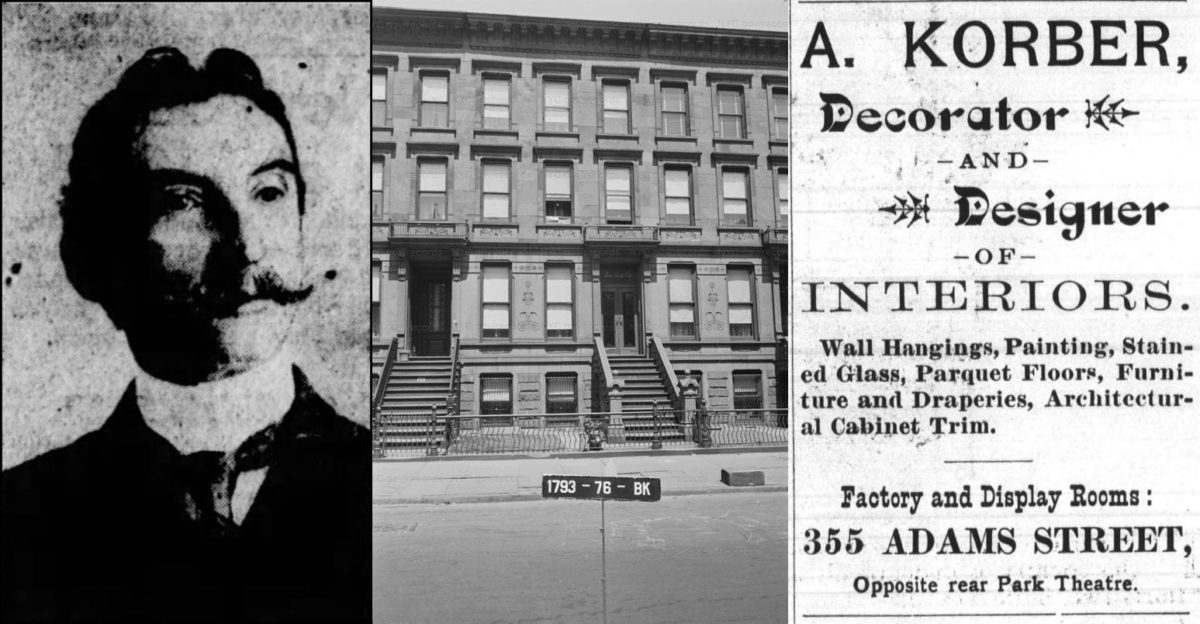
Brownstone Detectives investigates the history of our clients’ homes.
The story you are about to read was composed from research conducted in the course of one of those investigations.
Do you know the history of YOUR house?
********************************************************************************************************************************
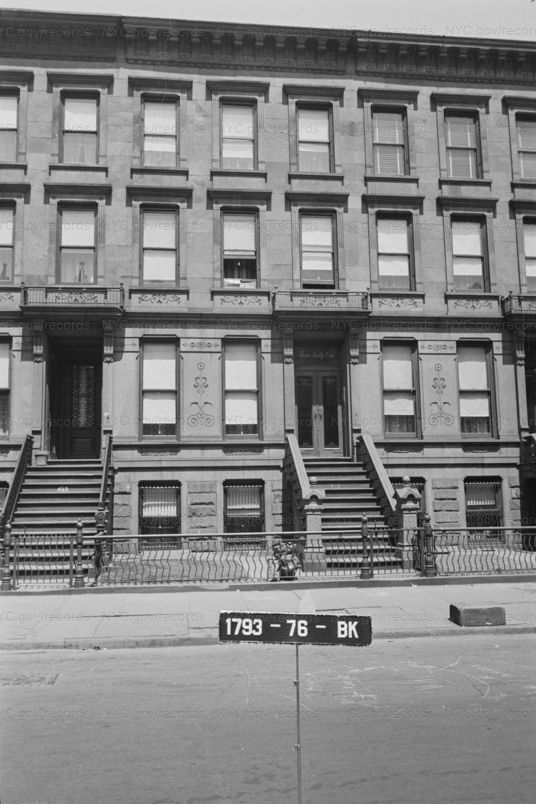
Starting in the late 1880s, the Brooklyn Daily Eagle started a series of articles which described – in great length and detail – the interiors of individual newly-built or renovated houses. These houses were usually brownstones belonging to those affluent or upper-middle-class members of society.
Not only did such articles describing the interiors of neighbors’ homes sell newspapers, but the articles also served as advertising directed at those in the market for a townhouse to have a home of their own.
These advertisement-articles were placed, likely at the expense of the designers responsible for the “interior decorations” being described, as each piece often ended with what readers wanted to know:
“Who did the work?”
WORK WAS DONE BY A. KORBER
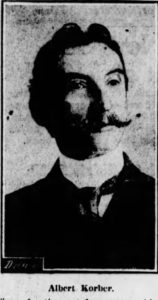
Albert Korber, who went by “A. Korber,” was an architect and designer who settled in Brooklyn at the age of 15. Three years later he “started business on Adams street as a manufacturer of picture frames and moldings. Several years later he founded the decorating business which bears his name, with showrooms on Montague street and a factory for the manufacture of interior woodwork and furniture in South Brooklyn.”
By 1889, Korber was 42, a successful decorator throughout the City of Brooklyn. His specialty was making the entrance to a house look fabulous by making it appear another room entirely.
That year he was working on a brownstone that had been built within the last 5-10 years belonging to John B. O’Donohue, a coffee and spice merchant.
During his visit to the Paris Exposition during the summer of 1889, O’Donohue, of No. 461 Greene Avenue, had his brownstone “remodeled, decorated, and furnished.” When he returned with a huge 10′ x 5′ Goethe-inspired painting – likely a scene from Faust – the artwork was injected into the remodel.
The decorator’s work was described in intricate detail by the Brooklyn Daily Eagle:
MAKE A RECEPTION ROOM OF YOUR HALL…
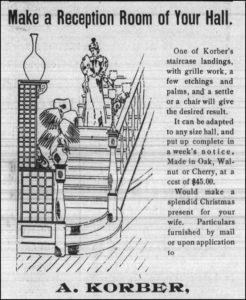
“The hall is generous in size and well proportioned,” began the Eagle. “The half screened staircase rises at one side and the light from the mullioned transom falls upon the high mahogany wainscot and staircase.”
The screening and screens along the staircase was a signature part of Korber’s design which added to the impression that the stairwell and hall was a separate room, used for receiving guests.
“The floor is inlaid with yellow oak and mahogany. A broad and oblong recess in the hall accommodates a massive settle, with a series of panels and tapestry above, and wrought iron lanterns, with cranes, hang each side. An arched screen, composed of turnings and carvings, supported by a Corinthian column, with side drapery, conceals the staircase from view.
“Above the wainscoting is a broad space for a paneled frieze. The cornice is mahogany and the ceiling paneled to correspond with the wainscoting. The entrance to the hall is by a broad single door, with arched transom. The general tone of decoration is subdued and quiet in effect. The hall back of the staircase screen is of natural cherry and is carpeted with Oriental blue and bronze Axminster.
“The walls and ceilings have a deep Pompeiian yellow ground, the surface being first finely stipped with flatted oil paint, then a large open, graceful and slender design in relief of a deeper yellow tone, proportionately relived with dull bronze, which not only increases the apparent spaces but blends richly with the furnishing of the hall.”
THE “GOETHE” IN THE PARLOR
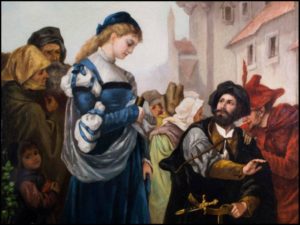
“The mantel, which has a bric a brac mirror, was removed to an upper room,” noted the Eagle, which was replaced (and the fireplace likely closed up) with a monstrous 10-foot high by 5-foot wide original painting (on blue satin), “with its subject taken from one of Goethe’s life studies (Ed.’s note: “Could it have been ‘Faust'”?)
“A receding curved and ornamented gold frame incloses the work of art.
“The cabinet work in the parlor is of a pale mahogany. The decorations are of ivory and gold and the furnishings of blue draperies of heavy French satin, with luxurious furniture carved and upholstered in the same material.
“Next to this is an inclosure of blue satin 10 inches wide, and on this is a design in gold leaf, connecting on each side in the center with oval beveled mirrors inclosed with narrow, ornamented frames of gold leaf. The outer inclosure of blue is of pale mahogany, corresponding with the connecting base of the room. On each side, connecting with the frames are, are two bold and richly carved and gilded pedestals, with onyx tops.
“French vases, adorned with scenes of the First Empire and bought at the Paris Exposition by Mr. O’Donahue, stand upon the pedestals. The library is fitted up in Oriental style. It has the proverbial rugs, couches, recesses and intricately wrought lanterns.”
IN “THE DININGROOM…”
“The diningroom is oblong and cozy. Its woodwork is of oak, as are also its general finishings. The walls and ceilings are paneled in circular and square designs of relief plaster, colored and decorated with a faint flashing of bronze. Plants fill the spaces of the box windows.
“The spacious rooms on the second floor are beautifully decorated and furnished.”
———————————————————————————————————————–
 Brownstone Detectives is an historic property research agency. Our mission is to document and save the histories of our clients’ homes. From our research, we produce our celebrated House History Books and House History Reports. Contact us today to begin discovering the history of your home.
Brownstone Detectives is an historic property research agency. Our mission is to document and save the histories of our clients’ homes. From our research, we produce our celebrated House History Books and House History Reports. Contact us today to begin discovering the history of your home.